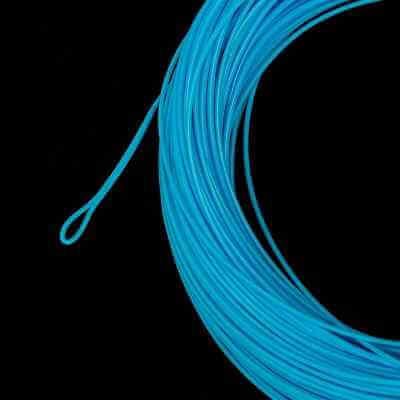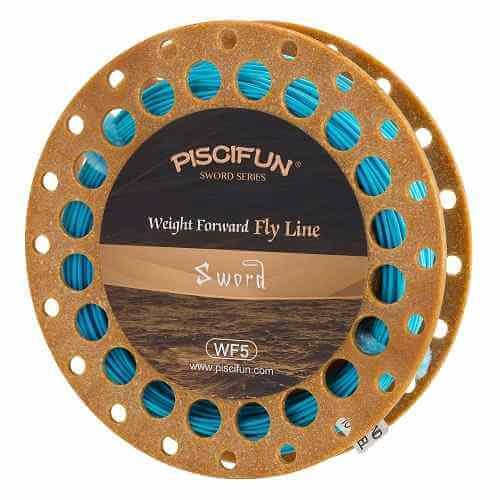Choosing the right fly line is absolutely critical to your fly fishing success. At first, you need to make an effective fly cast and secondly, you need to present the fly in such a way to convince the fish to bite it this is particularly a daunting task if you’re new to fly fishing. Or, you just dabbled in it the reason being you literally have hundreds of choices and confusions such as how to choose fly fishing line.
Why Do You Need The Perfect Fly Line
In this article, we are going to help you narrow those choices down so you can choose the right fly line for you. It will enable you to make the right choice in selecting a fly line that enables you to make the good cast. The right fly line will effectively present your flies to the fish. Below, we will be pointing out the things that we want you to consider.
How To Choose Fly Fishing Line- For Streams & Big Rivers

Does it float?
The myriad of choices in selecting a fly line begins in selecting whether or not it’s a line that floats. There are options of having fly line that sinks or even a combination of the two where a portion of the line floats and a portion of it sinks.
If you’re going to have a broad spectrum of fly fishing experiences such as you’re going to fish streams or, you’re going to fish big rivers possibly lakes and ponds, we want you to consider a floating fly line.
How long is the sinking part?
Now, when you get into these combinations that’s where the numbers of the choices go exponential. For example, the problem with fly lines where you have a sinking portion is that the sinking portion can be five feet long. It could be as many as 30 feet long and everything in between. You need to choose the one that you are most comfortable with.
Have you thought about the sink rate?
With sinking lines, you have a variety of sink rates from a fly line that has a type 1 rating or an intermediate. It has a sink rate of maybe 1.5-2.0 inches per second. You can find ranges of options having type seven or type eight sinking line which may sink at a rate of up to 10 inches per second.
The Taper
Next, you have to consider the taper. Usually, when beginners start fly fishing, many of them do not realize the line should be tapered. In terms of taping fly line, you have two good choices out there. Let’s discuss each one of those and see which one is right for you.
Double Taper
Double tapered fly line has certain advantages such as:
• If you need to make a delicate presentation of the fly, the double tapered line is an excellent choice for doing that.
• Secondly the double taper is an excellent choice when you need to perform a roll cast. Roll cast is one where you have an obstruction behind you such as trees, tall grass, barbed wire fence. If you take your line behind you on a standard fly cast, you’re going to hang up your line maybe break your fly. Roll cast enables you to keep the line essentially in front of you and get the fly out there in front and present it to the fish without ever having to take the line behind you.
• An advantage that double taper line has is economy. It’s tapered at both ends of fly. When a double tapered fly line wears out after long time use, if it’s a floater and the coating cracks, which eventually will, what you can do is pull the line off the reel, turn it around, and you’ve got a brand new taper. Awesome, isn’t it? Yes, that’s a nice thing to have a brand new taper at the other end.
Weight Forward Taper
The other taper is the weight forward. Let’s take a look at the profile of a weight forward taper. The weight forward really has four advantages:
• If you need to cast for distance, it’s the weight forward line that’s going to do the job easier than a double taper.
• If you need to cast in the wind, and sooner or later we all have to deal with the wind, the design of a weight forward taper enables you with a good cast to pierce the wind and to make that cast. On the other hand, a double taper line is going to get blown around because of its profile in the wind.
• With the weight forward taper, if you’re going to cast large air resistant flies, let’s say like a bass bug or an oversized dry fly or you’re going to cast heavily weighted flies, the weight forward taper is better designed to do that. In this case, when you make the cast, the momentum of the cast carries through the entire line and leader all the way to the fly.
• Lastly but very important, especially for beginners, the weight forward taper is easier to cast. More of the lines weight, as the name would imply, is placed at the forward on the line which makes it easier to do a short cast, where most beginners begin.
Considering the facts, it’s easier made with a weight forward taper, all things being equal. We highly recommend weight forward taper because that’s what we use 99% of the time.
Check Your Rod Compatibility
You need to match the line to the rod. On the line box, there is a line of code letters and numbers. Let’s take a look at the typical code or specs you’re going to see on a line box.
The first two letters here refer to the taper of the line. Most often you’re going to see DT for double taper or WF for weight forward. Secondly, we have a number and that number is the line weight. That’s what you’re going to match to the rod that you are going to use for casting. Let’s say you have a trout rod. Typically, it will have a 4, 5 or 6 weight line recommended on it. Look on the rod blank, you’ll see the specs and the recommended fly line. So on the fly line box, you need to look for that number that matches with your rod. The third part of the code on the line box tells you whether or not that is a floating line indicated by an F or, a sinking fly line indicated by S or, a combination will be shown as F/S.
Again, match that fly line to the rod you’re going to cast it on.
Should You Think About The Color?
Another consideration, if you get a floating fly line as your line of choice, consider the color. The question we always get most often by our readers is, does the color of the line startle the fish, does it alarm them. Our answer to them is, it isn’t the color of the line that disturbs the fish. It’s when you make up the faulty cast and the line splashes on the water. Or, it’s the shadow of the line, especially in shallow water, that can alarm the fish. When you think about it, the fish are looking up at the line against the sky as the background, so it’s very hard to see the color.
The color is for you to see especially in dim light conditions, also if you are fishing small flies and can’t locate that fly visually. So, if you follow the fly line, it will lead you to the fly. A brightly colored fly line is always our recommendation for a floating fly line.
To Sum It All Up
The right line for you if you’re a generalist and you’re going to have a broad spectrum of fishing waters streams rivers lakes and ponds, the first fly line you should consider is a-
• A floating fly line with
• Weight forward taper
• Brightly-colored
• Make sure it’s matched to the rod you’re going to cast it on
How To Choose Fly Fishing Line- For Ponds & Lakes
Let’s say you’re after another fly line and you want to fish in ponds and lakes. In that case, we would ask you to consider a full sinking fly line with an intermediate or type-1 sink rate. It’s going to have a sink rate of about 1.5-2.0 inches per second. It’s your single best choice for that water level.
Having all these facts considered, now you have a detailed guideline on how to choose fly fishing line whether you are casting on lakes or rivers. If you have any confusion about the whole fly line choosing process, do not forget comment below and also, if you believe these tips can help your friends, then do share the article in your social media.
Last update on 2024-03-31 / Affiliate links / Images from Amazon Product Advertising API
